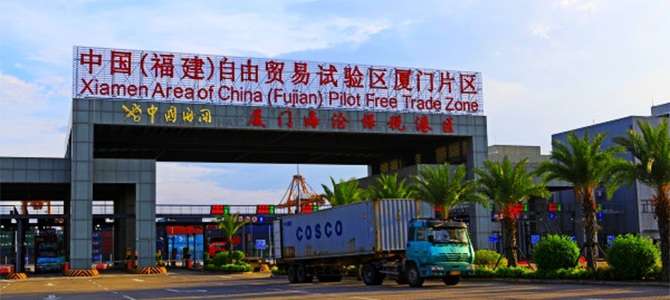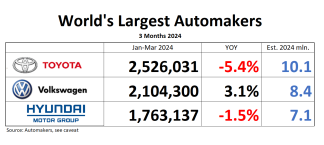When you read this, you probably have heard that China is doing away with its requirement that foreign automakers need a 50:50 Chinese partner before they can make automobiles in the Middle Kingdom, the only legal way to avoid the country’s egregious 25% import tax. You will also have heard that this will open the gates to Tesla’s ultimate domination of the world’s largest car market, and especially of the world’s largest electric car market. If you haven’t heard, you certainly will.
There is only one problem: It is not true. Car companies indeed will be able to build EVs on Chinese soil, and on their own, but they won’t get around the tax, and therefore won’t be competitive with indigenous products.
Today, the Nikkei reported that China will “allow more foreign ownership of green auto ventures.” Bloomberg had an even more ebullient headline: “China to Test Easing Curbs on Foreign Electric Vehicle Firms.” If you skim the story (and who reads more than the headline, and possibly the first paragraph these days? You might, but most won’t) you will indeed get the impression that the gates to the Middle Kingdom suddenly are wide open.
Digging into the articles, one may note that the no-joint-venture production will only be possible in China’s free trade zones. But who really knows what those, and their implications are? At least the New York Times gets it, including the subsides part, which is a completely different story. Most people will think, and more than a few writers, regurgitating Bloomberg and the Nikkei, will write that China has caved-in to the biggest seducers of these days, Elon Musk and Donald Trump, and that it opens wide.
Even Hans Greimel, Japan correspondent of Automotive News (and I know no-one with a better grasp of the industry) had a first impression along theses lines, and he tweeted: “Could this be a benefit for Tesla?”
As I have explained months ago when the matter came up, the rule, if passed, would not give Tesla and others a free hand in producing EVs anywhere in China. The rule, if passed, would allow the EVs to be made without a joint venture partner in one of China’s free trade zones only. For customs purposes, free trade zones are outside of the country. Once the product leaves the free trade zone, the import tariff is charged as if the car came by boat from a far-away country.
“Wholly foreign-owned businesses within China’s free trade zones would also still be subject to a 25% vehicle import tariff when selling their products in the rest of the country because such zones are technically considered outside of China for customs purposes,“ Liu Enzhi, a professor at the Tianjin University of Finance and Economics, told the Chinese business magazine Caixing.
Production in a free trade zone would not solve Tesla’s big customs problem, and that’s why it put China production plans on ice for at least three more years.
Neither Bloomberg, nor the Nikkei explain to their readers these expensive implications. Flagrantly, Bloomberg even writes that
“China’s weighty import tax — 25 percent for luxury cars — means foreign automakers must produce in China to make them mass-market affordable. A relaxation of the joint venture rule would give companies like Tesla Inc. the opportunity to set up fully owned manufacturing operations in China, the world’s biggest market for electric vehicles.”
Production in an FTZ doesn’t get around the tax. Goods need to clear customs, and duty needs to be paid at the gates (and there are gates, and customs checks) of the FTZ.
Even more recklessly, Bloomberg writes that
“The plan, announced by China’s foreign ministry Thursday, will also permit overseas companies to set up factories on their own to make utility vehicles, without the need for a local partner mandated by current rules.”
Not entirely true. They need to set up factories in the free trade zones to do that.
It is quite ironic that one must turn to Chinese state media to learn the whole truth. China’s state-run wire-service Xinhua quotes Vice Foreign Minister Zheng Zeguang as saying that “On a trial basis, restrictions will be lifted on foreign ownership in utility vehicle and NEV industries in pilot free trade zones by June 2018.”
This is no big deal at all. For customs purposes, China’s free trade zones are exterritorial, and not bound to many of the often byzantine rules of the mainland. If I would want, and if I would have the cash, I could even start manufacturing heavy helicopters in one of China’s free trade zones, without needing a Chinese joint venture partner. I wouldn’t even think it in China proper.
As for the taxes, the Vice Minister dangled the hope that “the government will also ‘gradually and properly’ reduce tariffs on automobiles.” Someday, maybe, very gradually.
The announcements were made during Trump’s visit to China. The Chinese know to placate the Donald: Make him feel like he’s winning. For that, they warmed-over a number of old plans (the FTZ matter being one of them) along with long-agreed deals (such as Ford’s joint venture with Zotye, which was agreed-upon in August). With a heavy helping of vague MOUs, the trip was feted as a $250 billion package, secured by Trump alone during a quick visit to Beijing.
“It’s old-style politics, where a leader comes in and you scoop a bunch of deals which were already under way, or you put out a big number to show the relationship is strong,” James McGregor, China chairman of the consultancy APCO Worldwide, told AFP. Even US Secretary of State Rex Tillerson had to agree. “Quite frankly, in the grand scheme… the things that have been achieved so far are pretty small,” he told reporters in Beijing.
Make no mistake: China wants Tesla like the proverbial hole in the head. China’s declared intention is to become the ruling power of the upcoming electric vehicle era. It can create the needed scale at home with big subsidies, and heavy coercion. It already is next to impossible to get a new gasoline car registered in China’s big cities. Two years from now, Chinese automakers will have to produce 10% of their cars as EVs, whether people want them, or not. With that edict, Chinese OEMs will have to put some 3 million EVs on the road in the year 2019 alone, that is one million more than were sold in the world from the early beginnings to the end of last year. In 2020, forced EV production will go to 12%, and so forth.
And then the batteries – to qualify for the generous central government subsidies, the battery must be from an approved battery maker. By sheer happenstance, they are all Chinese.
Foreign automakers are only tolerated as part of this exercise if they are existing joint venture partners like Volkswagen, Ford, Renault etc., who must comply with the rules. Nobody needs a 100% EV outsider like Tesla, who would only suck up money by selling credits to Chinese OEMs. This is China, not California.
China happily sent Trump back on his way thinking that he won, and it happily goaded Bloomberg, Nikkei, et al into wishful writing that China will give Elon Musk unfettered access to its electric paradise.
If you want to know China’s true plans, read Michael Dunne’s piece about “China’s looming clash with the U.S.” Instead of easing the rules, “Chinese officials soon will unveil new regulations designed to give China a decisive upper hand in the market for electric vehicles,” Dunne writes. He lived and worked there, in the industry, for decades.
P.S.: If you want to get a feel about China’s prolific output of new electric vehicles, follow Tycho de Feijter and his China NEV Weekly, where you see more new EVs each week that Tesla made in the 14 years of its existence.






